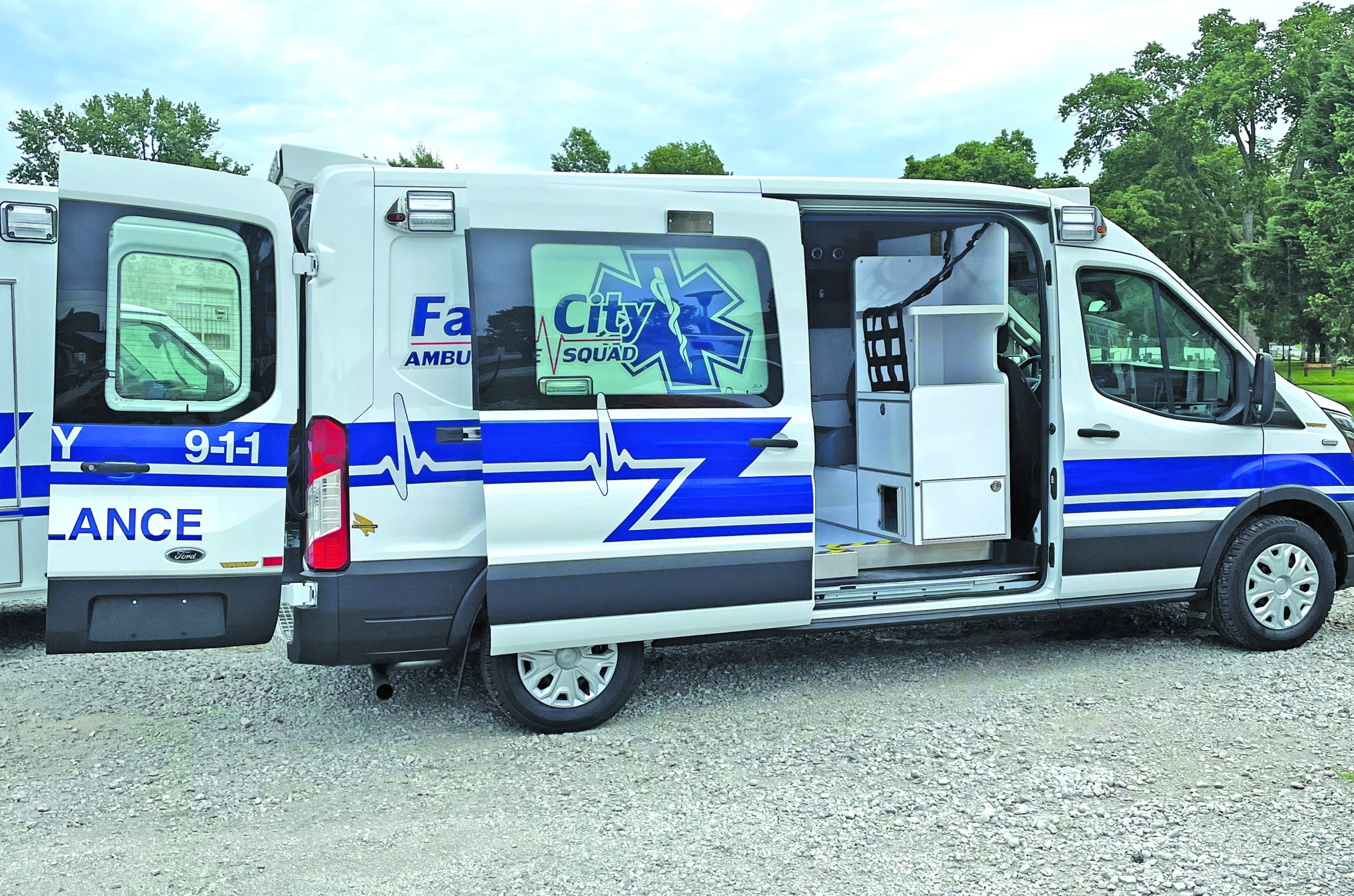On May 16, 1974, the Falls City Journal stated that the community ambulance service, provided by the Falls City Volunteer Ambulance Squad on nights and weekends for several months, would soon become a 24-hour service. The announcement came on the heels of Howard (Buddy) Simmonds’ announcement that he would no longer be operating the Simmonds Ambulance Service.
Many were shocked by Simmonds’s announcement, but he indicated family and financial reasons for his decision. Previously, Simmonds had indicated to the Volunteer Ambulance Squad and to the county commissioners that he would cease daytime service on January 1, 1975.
Fast-forward to today and the Falls City Volunteer Ambulance Squad is still thriving and serves a critical role in the Falls City area 50 years later.
On that date back in 1974, the squad consisted of 18 volunteers, with Peter Beekman serving as president.
Beekman released this statement to the press at the time of the announcement.
“Continuation of an ambulance service is a vital necessity. We cannot be left without ambulance facilities. The lives of people in this area hang in the balance. This quitting without notice will naturally cause some problems with the Falls City Volunteer Ambulance Squad, the most pressing being equipment.”
Max Rathman, Community Hospital Administrator, noted that the new ambulance would be received in late June.
“It is not a question of whether the Falls City Volunteer Ambulance Squad can fill the gap or not,” said Beekman. “We must do it; there is no other choice.”
One month later, Harold Prichard told the Rotary Club that the volunteers responded to approximately 20 weekly calls. He said a new radio device, plectron, linked the members with the dispatcher at the police station. Members were expected to arrive at the hospital within 2 ½ minutes of the call and to be at the victim’s location within five minutes.
Falls City Volunteer Ambulance Squad president Robert Olberding recently stopped by the Journal to discuss the 50th anniversary of the squad and some of the new additions.
“We just purchased a new long-distance van that we use, in conjunction with CMC, if patients need to be transferred to higher acute facilities like Omaha and Lincoln,” said Olberding. “We’ve got another ambulance now that we use; we kind of just went the van route because it’s a little smoother and better on gas mileage.”
According to Olberding, the squad now has three units in use, which are semi-interchangeable.
“We use one strictly dedicated for town calls,” said Olberding. “One is dedicated for transfers, and the third one is kind of if we have a second one or second town call.”
The Volunteer Ambulance Squad averages nearly 35 monthly calls and runs about 12 transfers each month.
Olberding stated that one significant change has been the need to charge for specific calls, such as lift assists.
“I know that was a big, we probably had six to eight months of discussion before feeling like we had to crack down on the lift assist that we have,” stated Olberding. “It is a good community service and we don’t want to try to nickel and dime everybody, but everything has gotten so expensive. Many people don’t know that we don’t get county or city funds; it’s all kind of what we make with transports and long distances. Obviously, the donations; I’ve got to give the community props. I want to say for the spaghetti feed last year, we were over $10,000.”
Robert joined the squad during his senior year of high school, spent his first few years as a driver, and became an EMT in January last year.
According to Olberding, there are currently 11 EMTs and four drivers, but he stressed the need for more volunteers. The ambulance squad covers 365 days a year and has at least two people scheduled daily.
“We are always looking for new applicants,” said Olberding.
Requirements for drivers include the need to be CPR certified, which the squad pays for.
Keep in mind if you are interested in volunteering, no previous experience is necessary.
“We go through a 60–90-day probationary period where you are on with another driver that will show you the ropes,” said Olberding. “We can show you where stuff is and where stuff is stocked. We have some members that are getting older and probably getting close to retirement age and wanting to enjoy their families. So, we’ll definitely take all the help we can get.”
The squad’s only requirement is being on call 24 hours per month, which includes 12 hours on a weekend and 12 hours throughout the month.
“We try to be as flexible as we can,” said Olberding.
The squad volunteers for standbys at both high school and junior high football games and at events such as the Jaycees wrestling and tractor pull.
Ideally, the squad would have somewhere between 20-25 volunteers, according to Olberding.
The Volunteer Ambulance Squad hosted a taco feed at the ambulance barn on Sunday, May 19, coinciding with the start of National EMS Week.
